High-Intensity Interval Training (HIIT)
High-Intensity Interval Training (HIIT) is a workout style that alternates between short bursts of intense activity and periods of lower-intensity exercise or rest. It is highly effective for improving cardiovascular fitness, burning calories, and building endurance in a short amount of time.
HIIT can be adapted to various fitness levels and exercises, making it a versatile option for those seeking efficient and dynamic workouts.
What is HIIT?
Any exercise that includes a brief interval of high-intensity activity followed by a rest or low-intensity exercise period is known as high-intensity interval training (HIIT).
Intense activity can last anything from a few minutes to less than forty-five seconds. Before repeating the process, people relax or engage in mild exercise for a comparable amount of time.
Even though a full HIIT workout only takes 15 to 20 minutes, it offers numerous advantages. For those who struggle to commit to longer sessions, its brief duration might make it a very useful and efficient option.
Additionally, HIIT doesn’t require any special equipment or gym membership, so anyone can do it whenever and wherever it’s convenient for them.
Advantages of HIIT:
Increased Cardiovascular Fitness: In certain situations, high-intensity interval training (HIIT) is more successful than moderate-intensity continuous training at increasing cardiorespiratory fitness (VO2 max). The cardiovascular system is challenged by frequent, high-intensity activity bursts, which causes modifications that improve its effectiveness.
Increased Fat Burning: HIIT can increase fat oxidation both during and after exercise, in contrast to steady-state cardio. HIIT increases excess post-exercise oxygen consumption (EPOC), commonly referred to as the “afterburn effect,” which causes your body to continue burning calories more rapidly for hours after the workout.
Better Muscle Power and Strength: Some HIIT regimens, particularly those that incorporate resistance training or plyometrics, can help enhance local muscular endurance as well as muscle strength and power.
Increased Insulin Sensitivity: Research has indicated that HIIT can increase insulin sensitivity, which is advantageous for people using insulin or having type 2 diabetes.
Time Efficiency: People with hectic schedules may find HIIT workouts helpful because they are usually shorter than standard cardio workouts.
Metabolic Boost: HIIT has the ability to increase your resting metabolic rate, which indicates that you are burning more calories even when you are not exercising.
How It Operates
As the name implies, high-intensity interval training, or HIIT, is challenging. By pushing your pace beyond your comfort zone, it elevates your aerobic workout to a new level.
Combining HIIT with any type of cardiovascular exercise, including jogging, stair climbing, rowing, or jumping rope, is possible.
Building out at a high intensity for a longer period after building up a sweat, you will then work out at a very high effort again.
Compared to keeping a steady pace, you can save time by employing that strategy, which lowers the amount of time you need to spend exercising.
You’ll lose weight, build muscle, and speed up your metabolism. Furthermore, for about two hours after your workout, your body will keep burning calories.
How To Start
One advantage of HIIT is that it can be performed anywhere, such as in a park or at home.
There are probably HIIT courses available at your neighborhood gym, but this kind of workout doesn’t require any classes or special equipment.
Individuals can complete the exercise periods using their favorite type of exercise. They could want to run, ride a bike, or use a skipping rope. Those who use workout equipment can adjust the resistance to a higher level for added intensity and then lower it again for rest.
Additionally, people can perform a range of workouts with just their body weight, including:
- Burpees
- press-ups
- jumping jacks
- squats
- sit-ups
A HIIT workout often consists of
High-intensity intervals: These refer to brief bursts of exercise that are either near-maximal or maximal effort (20–60 seconds, for example). Running, high-resistance cycling, and plyometric activities like jump squats are a few examples.
Recovery Intervals: Before the subsequent high-intensity interval, the body can recuperate to some extent during these rest or low-intensity activity periods (such as strolling or moderate jogging). Although the length of recovery periods varies, they frequently last as long as or less than high-intensity intervals.
Repetitions: Depending on the particular HIIT protocol and the individual’s level of fitness, the high-intensity and rest intervals are repeated for a maximum of four to ten cycles.
Whole Workout Duration: An HIIT workout is a time-efficient training choice because it typically lasts 10 to 30 minutes, including warm-up and cool-down.
HIIT Workout Types
These are some HIIT exercises. You will learn how to perform HIIT workouts if you read them. The greatest HIIT workouts for beginners will be demonstrated later in the post, along with a few other HIIT activities.
Tabata:
Probably the most popular HIIT protocol is Tabata. One full-body workout lasting 20 seconds at maximum effort is performed, followed by a quick 10-second recovery. Workouts with TABATA usually last 4–10 minutes. Thus, if the Tabata workout lasted 10 minutes, you would have completed 20 sets or 6.6 minutes of work. This enables a little workout to be very effective.
Sprints:
Sprint HIIT exercises are fairly simple. There are three simple approaches.
Jogging for 12 seconds after an 8-second sprint.
4 minutes of running after a 30-second sprint. Give it 18 to 30 minutes.
Running at a tempo involves sprinting 40 yards, walking back to the starting line, and repeating as soon as you get there. Spend ten to fifteen minutes on this task.
Since sprinting is by definition running at full speed, each sprint will require your best effort.
Before sprinting, make sure you warm up with some laps and dynamic stretches. Additionally, begin at 80% for your initial sprint and increase to 90–100%. You could sustain an injury like a pulled hamstring if you don’t. Check out our HIIT treadmill workouts if you’re hungry for some sprinting motivation.
15/35, 20/40, 30/30:
Your ratio of work to relaxation can be organized in several ways. Just make sure that you can always give it your best effort.
Workouts that alternate 15 seconds of work and 35 s of rest, the 20s of work and 40 of rest, or 30 seconds of effort and 30 seconds of rest could be done. This is helpful for novices.
Doing 40/20 (40 seconds of work, 20 seconds of rest) is an option for those with higher fitness levels.
One activity or circuit of different HIIT exercises can be performed for these types of training.
In any event, the objective is to reach 90–95% of your maximum heart rate throughout each session and to keep it over 65% while at rest. Therefore, the work-rest intervals ought to be in line with that. You perform the exercise or exercises with maximum effort, take a short break to recover to 65-75% of your maximum heart rate, and then resume. This will enable you to experience the full benefits of high-intensity interval training.
Program Length & Frequency for HIIT
HIIT exercises last five to thirty minutes. However, the 10–20 minute period is when HIIT works best. Aim for ten to fifteen minutes if you are new to fitness. Go for 15 to 20 minutes if you are in decent shape but have never done an HIIT workout before.
With every workout, challenge yourself. You aren’t working hard enough if your HIIT workout isn’t amazing.
It is advised to do two to three HIIT sessions per week. At least one, at least. You must incorporate HIIT workouts into your weekly routine in a way that prevents overtraining, as your training regimen should also incorporate resistance training, cardio, and stretching. After intense workouts, you need time to recuperate.
When to perform HIIT exercises
If you combine cardio and resistance training, your weekly schedule can resemble this:
- Day 1: Strength Training
- Day 2: Heart
- Day 3: HIIT
- Day 4: Rest
If working out twice a day appeals to you:
- Day 1: Cardio in the AM, Resistance in the PM Instruction
- Day 2: Take it easy
- Day 3: HIIT Exercise
- Day 4: Rest
Results of an HIIT Workout
You can anticipate some amazing results if you combine resistance training with two to three HIIT exercises each week. Naturally, for optimal outcomes and sufficient recovery, a healthy diet and adequate sleep are essential.
Although HIIT can begin to show results in as short as two weeks, you should generally notice some improvement in three to four weeks. Once more, this depends on your food, which is the most important factor in weight loss, and whether you are performing appropriate HIIT exercises.
Advice for HIIT workout safety:
- Warm-up and cool-down should be part of every workout.
- Select workouts based on your degree of fitness.
- Take into account your daily energy levels and general preparedness, and adapt as needed.
- Push yourself while keeping your form correct.
- Pay attention to your body and adjust or swap the workouts if you feel pain.
- Allow adequate time for recuperation in between strenuous workouts.
- Before you start, speak with a healthcare provider if you have any health issues, injuries, or prescriptions.
These are some easy HIIT exercises for beginners.
Bodyweight squats
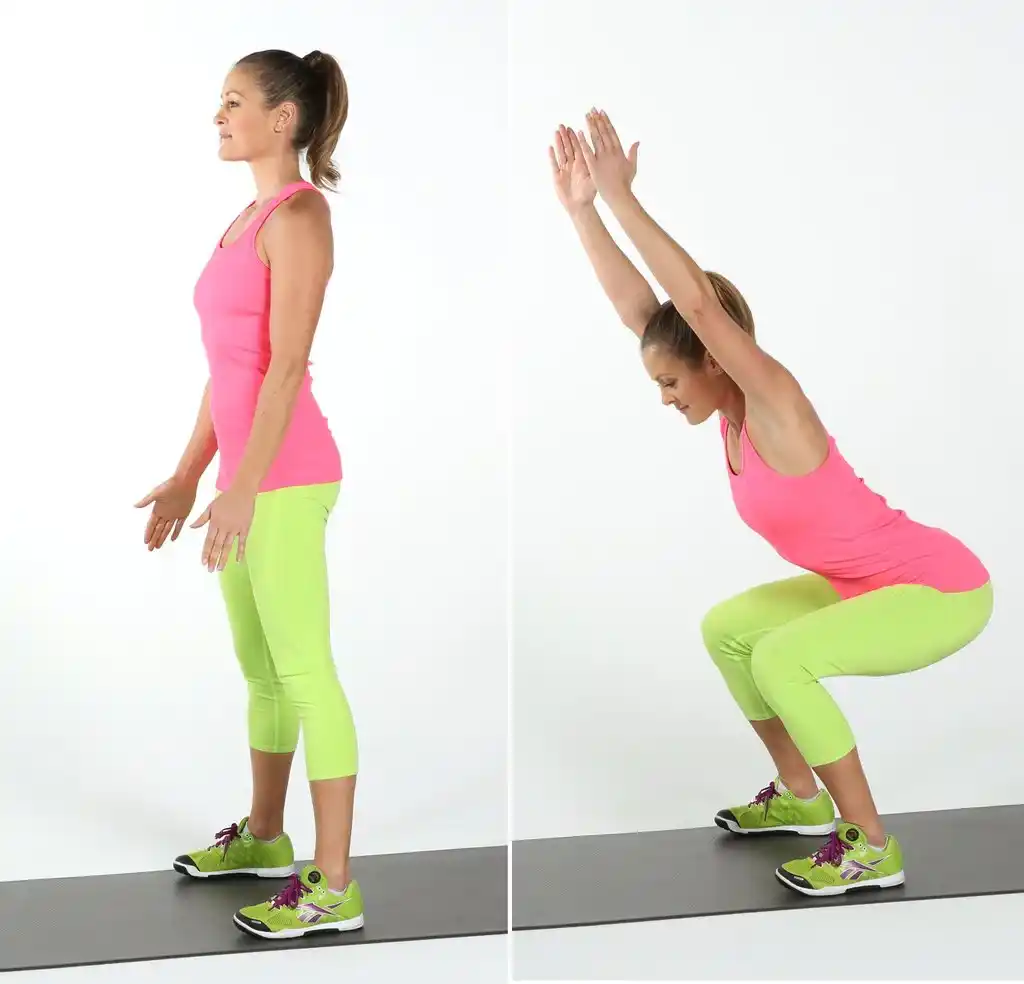
- Place your feet just under your shoulders as you stand.
- As you carefully lower your body, make sure your thighs are parallel to the floor.
- To get back to your starting position, put pressure on your heels.
- Keep moving in this manner.
Sprints

Run, then switch to jogging or strolling. Do stair sprints or hill sprints for more intensity.
Intermediate HIIT exercises
Use these intermediate exercises to improve your workouts once you’ve established a strong foundation of cardiovascular and strength conditioning.
Do two to four workouts per week, each lasting twenty-five to forty-five minutes.
Mountain climbers
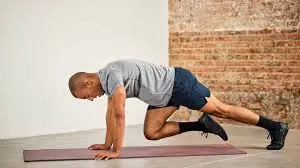
- Start with a plank posture.
- Your left knee should be up to your chest.
- Return your leg to the starting position.
- Your right knee should come up to your chest.
- Keep switching between your left and right knees.
Kettlebell swings
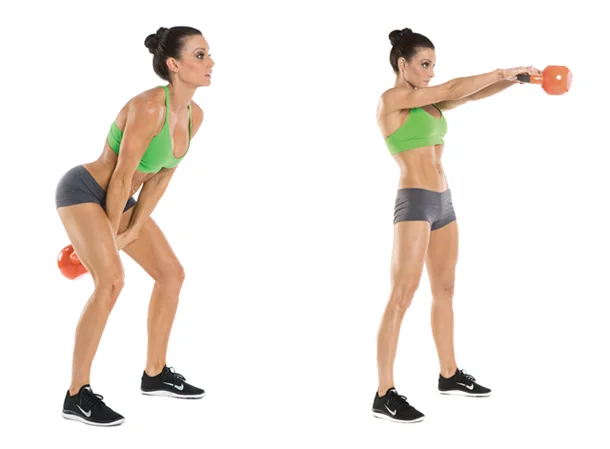
- Your feet should be shoulder-width apart as you stand.
- The kettlebell should be positioned one foot in front of you.
- Gently bend at the hips and knees.
- Take hold of the kettlebell’s grip with both hands.
- The kettlebell should be swung through your hips and up to chest height right away.
- Hinge the kettlebell at your hips to lower it.
- Keep moving in this fluid manner.
Advanced HIIT exercises
If you’ve perfected your form and want to push yourself, these more difficult options might be appropriate.
Advanced HIIT sessions often last 45 to 60 minutes. Four to five sessions each week are possible.
Clapping push-ups
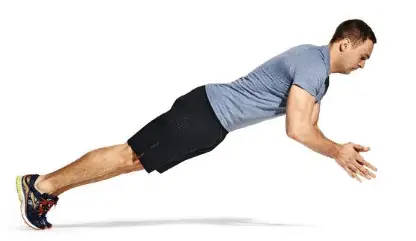
- Your hands should be somewhat wider than your shoulders when you begin in a plank or high push-up pose.
- Bring your chest down to the floor and bend your elbows.
- Effortlessly raise your hands off the floor.
- Give each other a hand clap.
- Gently return your hands to the ground.
- Continuously repeat the sequence.
Burpee box jumps
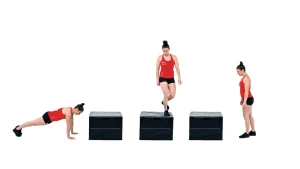
- Burpees are executed by squatting, placing your hands on the floor, and then hopping your feet back to the plank orientation.
- After performing a push-up, return your feet to your hands.
- After jumping on roof of the box, gently land.
- Take a straight stance on the box.
- Control your step-down.
- Make it harder by including a jump.
- Continue the sequence steadily.
Summary
High-intensity interval Training (HIIT) maximizes calorie burn and improves cardiovascular fitness in less time by alternating short bursts of intense activity with short recovery intervals. It is time-efficient, flexible, and appropriate for all levels of fitness.
FAQs
What is a beginner’s HIIT workout?
This HIIT workout for beginners combines strength and cardio to give you a taste of the amazing workout method. Even though “HIIT” stands for “high-intensity interval training,” a beginner can mistake it for “highly intense and intimidating training.”
How can I perform interval training at a high intensity?
Click-to-click high-intensity interval training sessions. Choose the sorts of exercises you wish to exclude, the number of exercises per round, the number of rounds to repeat, and the rest and work periods. During the work interval and the rest period, you will attempt to complete a single exercise.
What advantages do HIIT exercises offer?
Boosts Cardio: High-intensity interval training (HIIT) raises your heart rate, strengthening your heart and raising your level of general fitness. Enhances Endurance: Your body is trained to work harder for longer periods of time by those brief bursts of intense exercise, which increases your resilience throughout other workouts and even everyday tasks.
Does 20 minutes a day of HIIT make sense?
Daily 20-minute HIIT sessions can enhance cardiovascular fitness, metabolism, and general health.
Compared to typical workouts, HIIT’s efficiency and intensity provide for faster results. Additionally, shorter workouts might make it easier for you to stay consistent.
The 30-20-10 HIIT workout: what is it?
The 30-20-10 HIIT workout varies between periods of moderate intensity (20 seconds), high intensity (10 seconds), and low intensity (30 seconds). This routine should be repeated during your workout.
Based on your fitness level and personal preferences, you can incorporate a combination of cardio and bodyweight workouts.
Which five HIIT types are there?
There are several varieties of HIIT. By experimenting with several HIIT approaches, you may determine which one increases overall efficacy and suits you the most.
Common varieties consist of:
Sprint interval training, or SIT, is done with the Tabata 30-20-10 Pyramid.
The little technique
Reference
- Robinson, K. M. (2024, December 8). HIIT (High-Intensity Interval Training). WebMD. https://www.webmd.com/fitness-exercise/a-z/high-intensity-interval-training-hiit
- Sissons, B. (2020, January 13). What are the benefits of high-intensity interval training (HIIT)? https://www.medicalnewstoday.com/articles/327474#how-to-start
- Set, S. F. (2024, August 15). HIIT for Beginners: 18 exercises, 5 workouts & tons of training tips. SET FOR SET. https://www.setforset.com/blogs/news/hiit-for-beginners-best-exercises-workouts-tips
- Cronkleton, E. (2024, April 22). The 6 best HIIT exercises for all skill levels. Healthline. https://www.healthline.com/health/best-hiit-exercises#faq

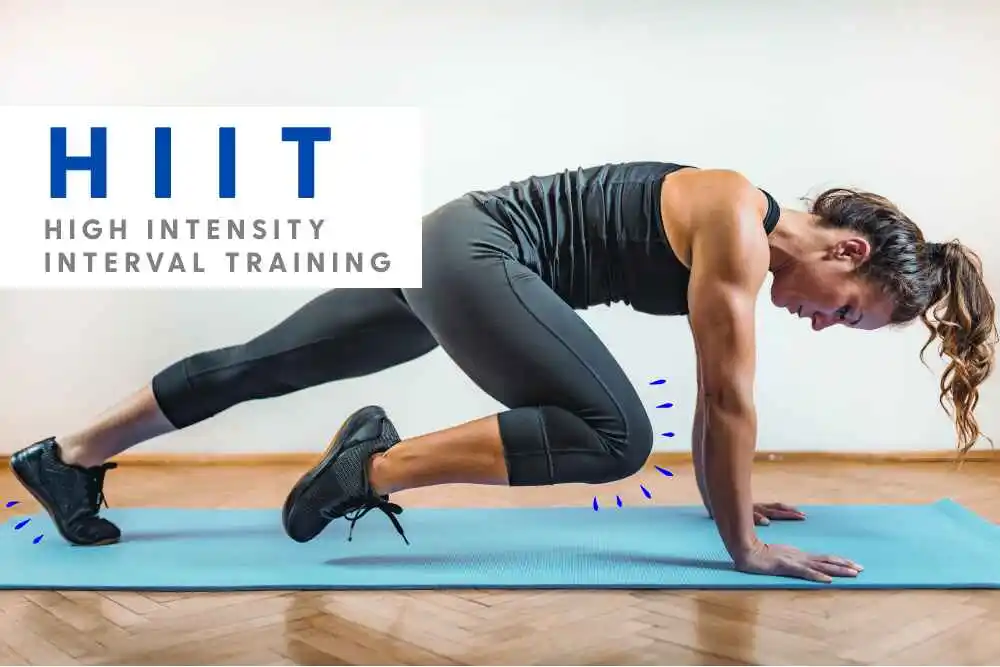


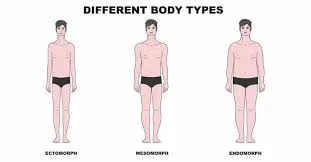



6 Comments